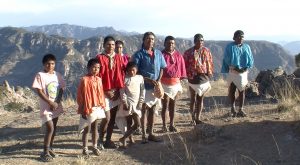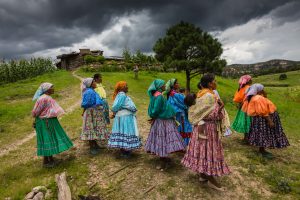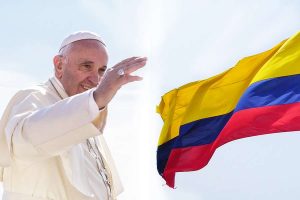Tenochititlan & Its Fall
Readings for today’s class:
- Victors & Vanquished by Schwartz : “Things Fall Apart” to “The Siege” 156-213
- Library of Congress, The Conquest of Mexico
- Tenochtitlan and Its Fall (Historical Analysis Prep)
Announcements
Midterm Exam guide
- Required skill: making argument with evidence and analysis of primary sources, with profound historical knowledge and historian’s thinking.
- Divided into three parts.
- First part: five responses out of eight questions. 20 minutes. Definition and analysis of historical significance of the key concepts of what we covered in Latin American history sessions so far.
- Second part: three responses out of four questions. 20 minutes. Provide short answer. Make an argument about the given topic, using your historical thinking and knowledge.
- Third part: One essay. 20 minutes. Choice of two quotes from certain documents. Identify the source of the quote, and contextualize it.
- Pay close attentions to the terms listed on the Midterm Guide paper.
Culture Blog Presentation
“Mexico City Earthquake” by Sofia
Based on a New York Times article the recent earthquake, the presentation mostly covered the step-by-step analysis of the article in lights of the recent development of the disaster. Photos from the heavily damaged urban buildings and small houses of Mexico City were shown, with presenter’s explanation about the extent of damage that affected the residents of the city. The Professor helped us to find the article linked on the bottom of the blog post, which shown digital graphic describing where exactly the earthquake started and how its impact reached the city. Apparently the epicenter of the earthquake was not located under the city itself – it was under the mountain ranges which spread eastwards to the city. There was an interesting discussion of how the areas where the ancient city used to be were relatively less affected than the urban center of the Mexico City. Professor reminded us to call back on the Inca stone bricks, which is said to have sustained earthquake damages far much better than the modern building structures. I asked the geographical question, about how the geography of the region affected the damage that was inflicted onto the city, which was answered with the digital graphic mentioned above.
Key questions for today’s class
- What factors account Spanish military victory at Tenochititlan?
- How do the victors looking back commemorate this event? What narrative do they create, and why?
Key Skills
- Primary source analysis – conflicting accounts of the events
- Visual analysis
- Historical commemoration & public art
Group Discussion
Professor Holt divided us into six groups, asking us to engage in discussions on the questions featured in Historical Analysis Prep paper handed to us in the last class. My teammates and I talked about how different the very details the accounts of King Moctezuma’s death depending on which party wrote such accounts. We also discussed what factors might have influenced the Spanish victory over the Mexica, and how the paintings describing the historical accounts of the Spanish conquest of the Mexica, which were painted by a Mexican painter who lived hundreds of years after the conquest, were implying about such events.
- The differences between the Spanish accounts vs. the indigenous accounts – both sides trying to push blame on the other side. Spanish claimed that Moctezuma, who tried to warn his people not to attack the Spaniards, was killed by a stone thrown at him, while the Mexica claimed that the Spaniards killed their king who was kidnapped and subjugated by the Spanish. The very tone of the accounts differed, with Spaniards more detached and calculating, and the indigenous much more personal and emotional.
- Possible factors that might have helped Spanish victory: Professor and the class engaged in prolonged discussion on the impact of Old World diseases, namely smallpox on the indigenous population of Mexico at the time Hernan Cortes and his soldiers stepped in. The factors such as advanced weaponry on the Spanish side and the shaky relationships between the Mexica and other indigenous groups were mentioned in group discussion.
Painting Analysis – The Conquest of Mexico
This session was very brief, and most of the discussions about these paintings were done in group discussion sessions. Professor asked whether these paintings seem like a propaganda material in favor of the Spaniards, glorifying and endorsing the Spanish accounts of the fall of Tenochititlan.
We covered only the first four paintings so far, both in general class discussion and the group discussion session where we talked about the fourth painting, The Death of Moctezuma by the Hands of His Own People. The very framing of the paintings was discussed, in which the Spanish were depicted in much more dominant position, while the indigenous less significant and more subdued and demoralized compared to the mighty-looking Spaniards. The paintings in general indeed seemed to be created in a purpose of commemorating the Spanish conquest, especially endorsing the Spanish part of the account. The very wording of the title of the fourth painting explicitly shows which part of the historical records these paintings drew their inspirations from.
Extra Questions
- How much did the Spanish try to convert the local population into Christianity at the time of Cortes’ endeavor? Did such efforts play part in the Fall of Tenochititlan?
- Which local indigenous tribes decided to help Cortes against the Mexica? What was their relationship with the Mexica like?
- If the The Conquest of Mexico paintings were indeed intended to be a propaganda, then what was the context behind the creation of these paintings? Were there any needs for such propaganda material at the time these paintings emerged?
Extra scholarly sources for this class
Fitch, Nancy. “The Conquest of Mexico”. American Historical Association. Accessed on September 26th, 2017. https://www.historians.org/teaching-and-learning/teaching-resources-for-historians/teaching-and-learning-in-the-digital-age/the-history-of-the-americas/the-conquest-of-mexico
Palfrey, Dale Hoft. “The Spanish Conquest (1519-1527)”. Mexconnect. Accessed on September 26th, 2017. https://www.historians.org/teaching-and-learning/teaching-resources-for-historians/teaching-and-learning-in-the-digital-age/the-history-of-the-americas/the-conquest-of-mexico





